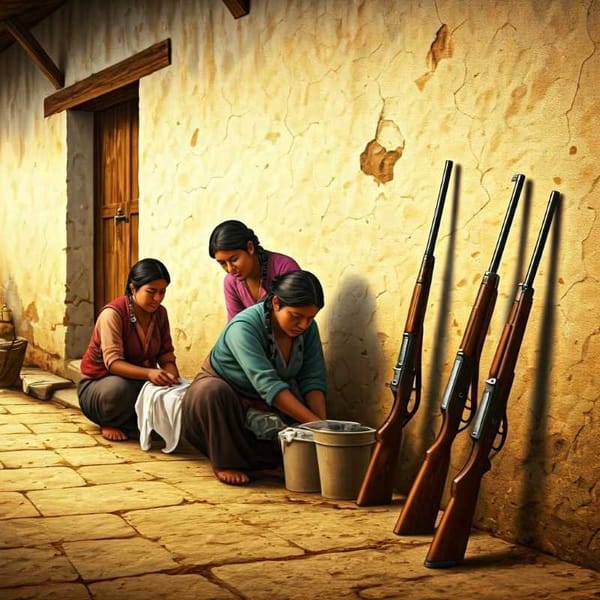A Celebration of Life: The Summer Cornfield and its Cultural Significance
Discover the cultural significance of summer cornfields and how they symbolize life, love, and community. Explore the shared experiences of working in the milpa, the harvest season, and the deep connection between people and the land.

Summer is indeed different, a time when the cornfield comes to life, dancing in the wind. The warm sunlight during the day makes the cornfield's greenery stand out, and at night, the cold moonlight calls for the warmth of a mat. The beauty of this season is not only in its natural splendor but also in the deep connection between the people and the land they cultivate.
The Milpa: A Shared Experience
Working in the milpa, or cornfield, can be overwhelming for a man due to the summer heat. However, for a woman, it is an enjoyable experience because she shares it with her man when he brings her the itacate, or food, at mealtime. Every day, they eat together under a tree, by a stream, or in the shade of the corn, sitting on a besana, a ridge between the furrows. This daily picnic is a simple yet profound expression of love, as the couple shares the joy of their hard work and the fruits of their labor.
The Blooming Season: Procreation and Sentiment
As plants bloom, they become more serious and sentimental, focusing on procreation. Bees visit the flowers and pollinate them, helping each bush to produce ears of corn. By mid-summer, the milpa enters its maturity, with the plants resembling respectable ladies, their leaves changing color as the corn dries and turns into kernels, signaling that childbirth is approaching and the cycle of life will continue.
The Harvest: A Time of Fraternization and Renewal
The harvest season is an essential time for the community, as farmers come together to participate in the harvest of their neighbors' cornfields. This collectivist tradition has persisted despite economic and social individualism, with everyone treating each milpa as if it were their own. The harvest is a time for dialogue, forgiveness, and hope, as the future appears more promising with the assurance of subsistence until the next year.
During the harvest, men and women exchange glances and participate in secret dates. One man grabs an ear of corn, folding its leaves down with four tugs and raising it to the sky as a sign of triumph. This gesture is a recognition that corn is the sun's child, and once it is born, the sun must see its offspring. Women make the sign of the cross and smile, signaling their readiness for childbirth.
The Cultural Significance of Cornfields
The summer cornfield, with its dancing cornstalks and blooming flowers, is more than just a source of sustenance. It represents the cycle of life, love, and renewal for the people who cultivate it. The shared experiences of working in the milpa, the daily picnics, and the fraternization during the harvest all contribute to a deeper connection between the people and the land they work. The humble cornfield thus embodies a profound cultural significance, reminding us of the importance of simplicity, love, and community in our lives.
The summer cornfield is a celebration of life, love, and the connections between people and the earth they depend on. The simple yet profound experiences of working in the milpa, sharing meals, and participating in the harvest remind us of the importance of humility, love, and community in our lives. The cornfield, dancing in the wind, blooming with life, and providing sustenance for the community, serves as a powerful symbol of the deep connection between humans and the natural world.
In-text citation: Conversación en la cocina, Gastronomía mexiquense by Rosita Sanchez. pp.18-21. 2006




